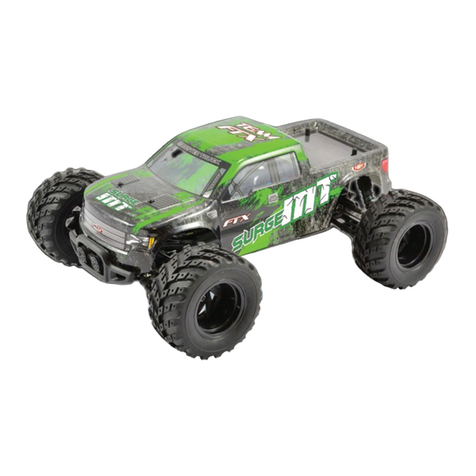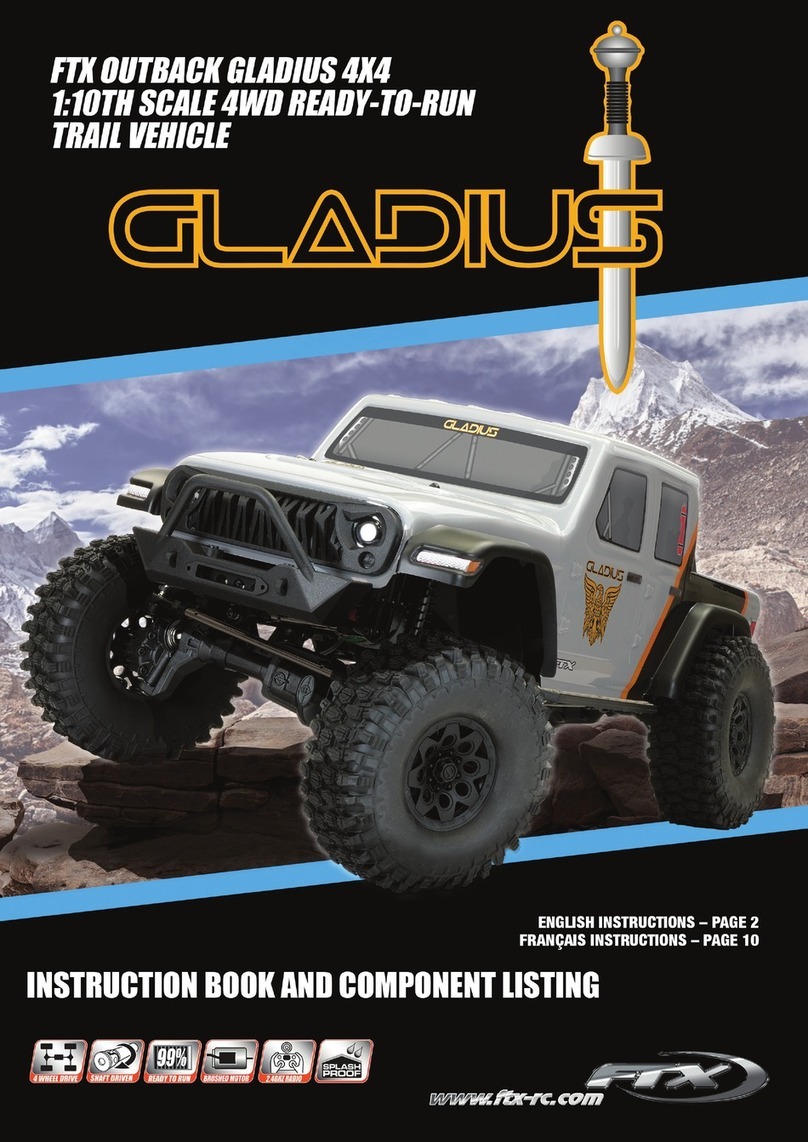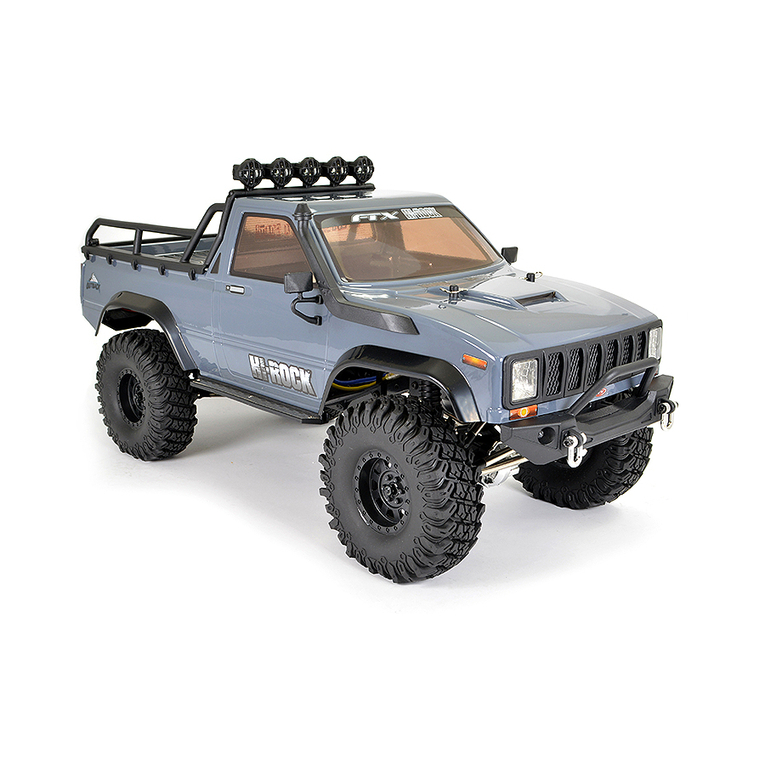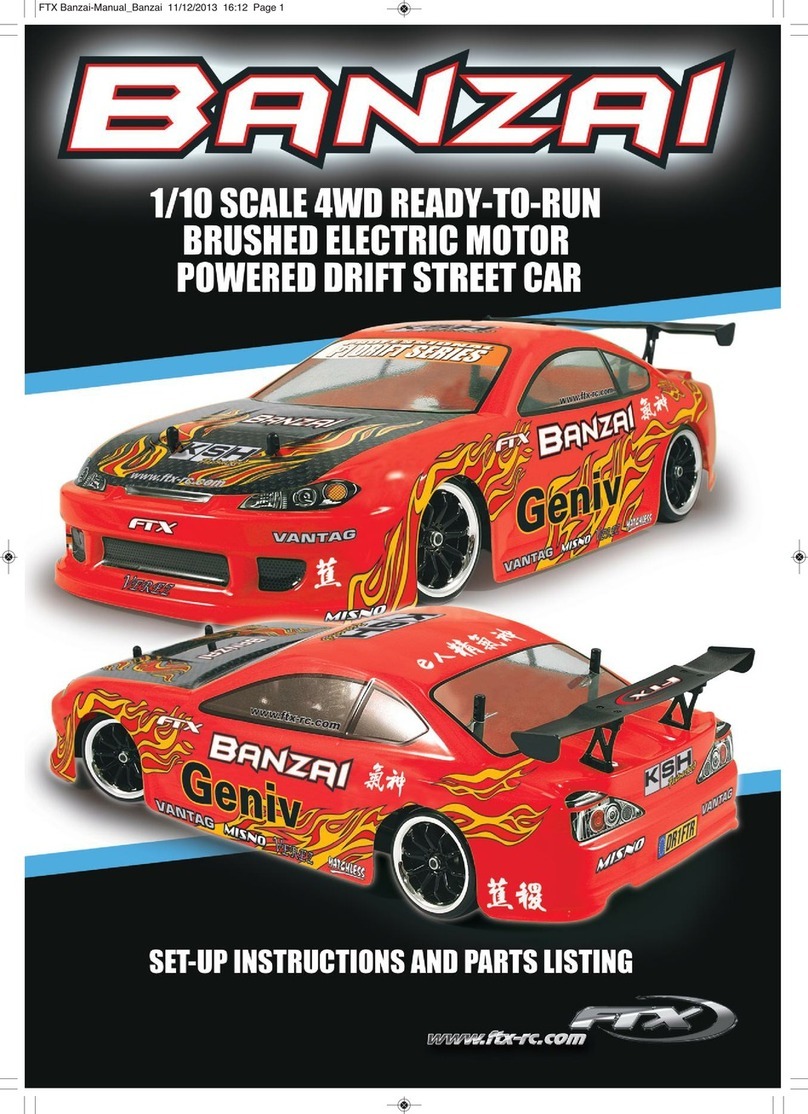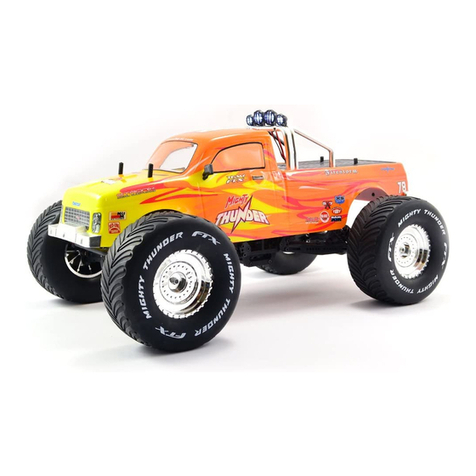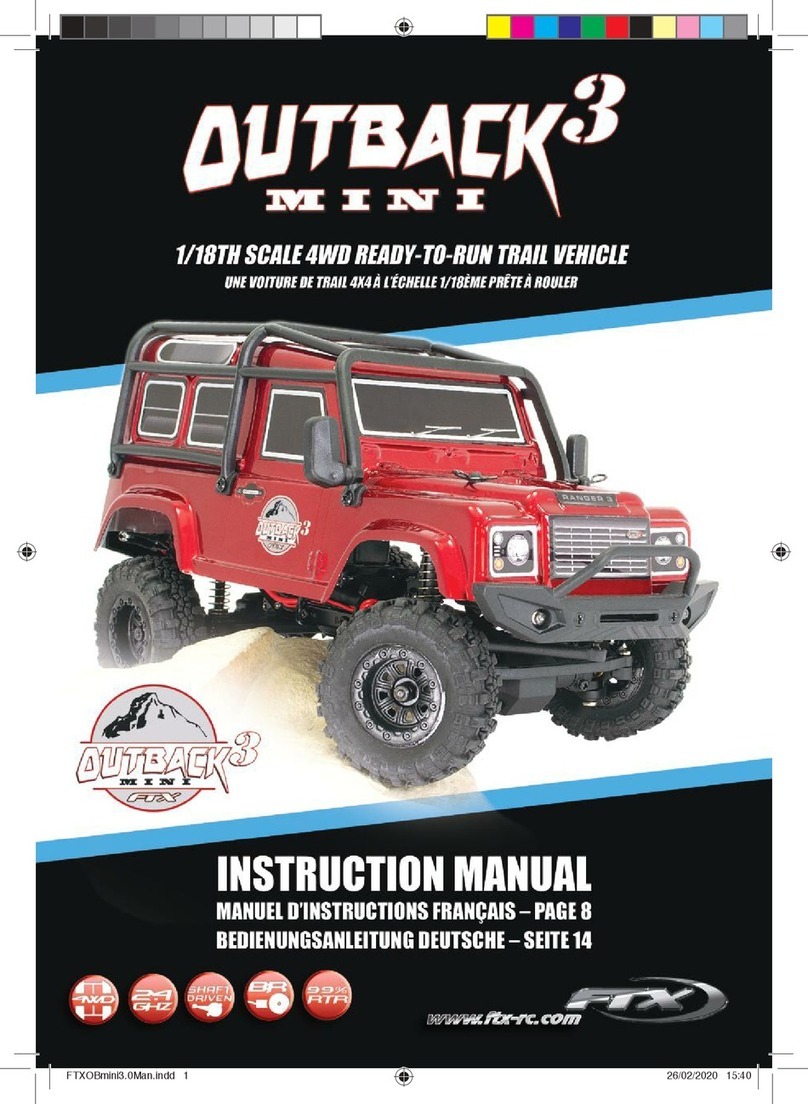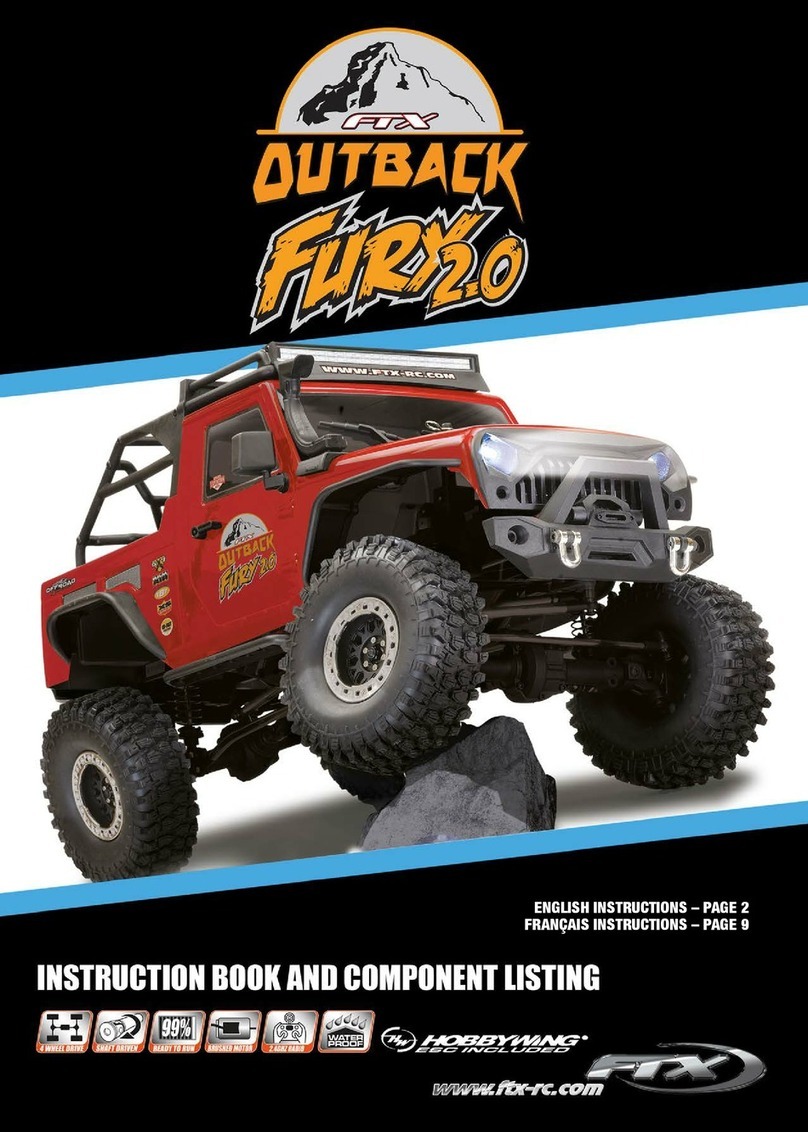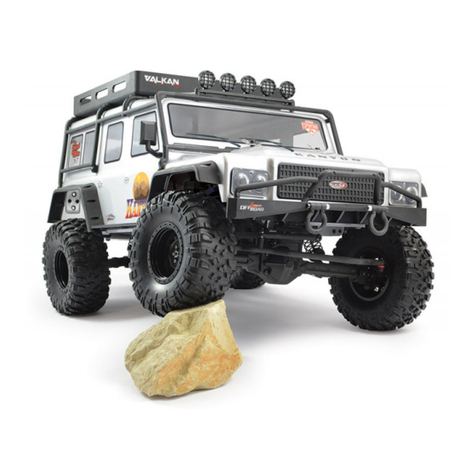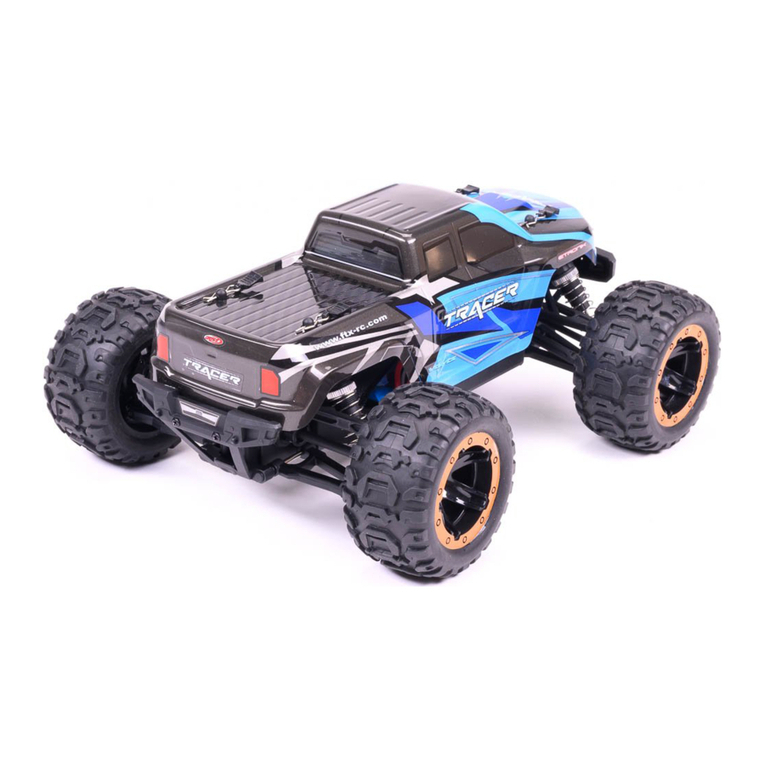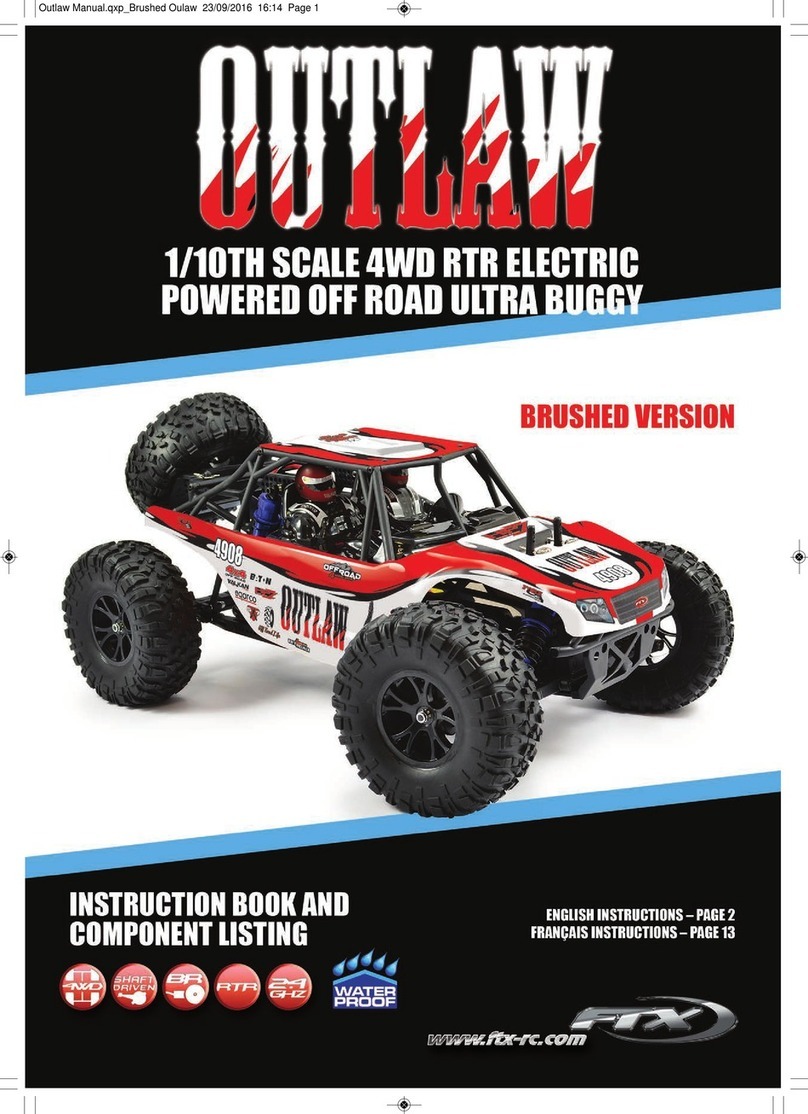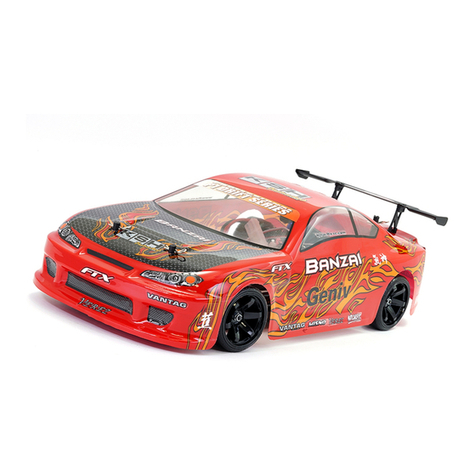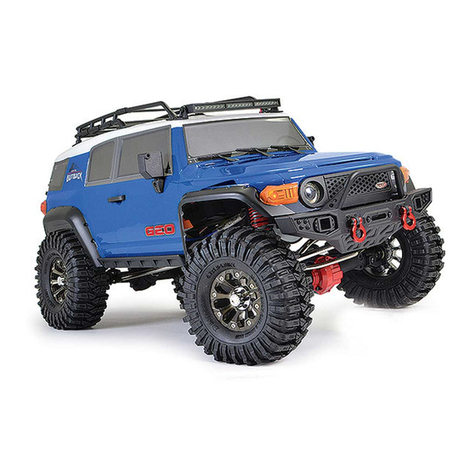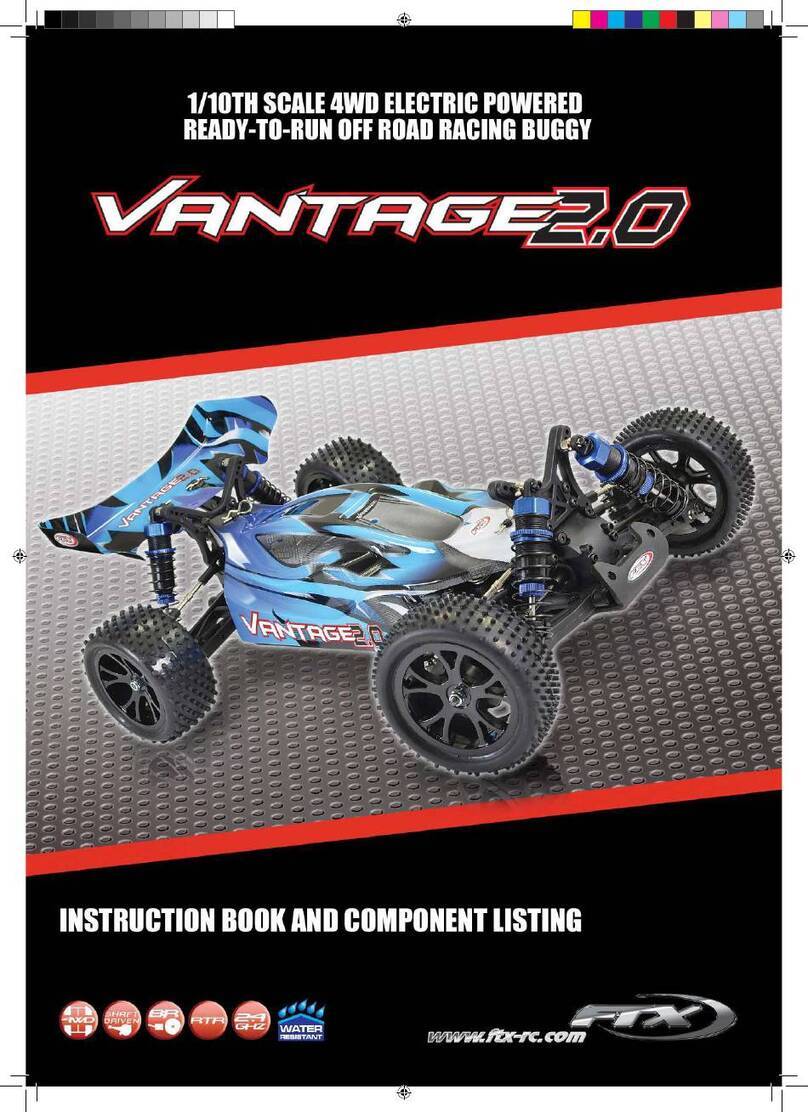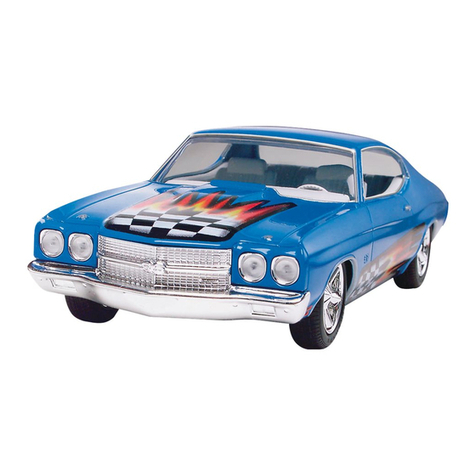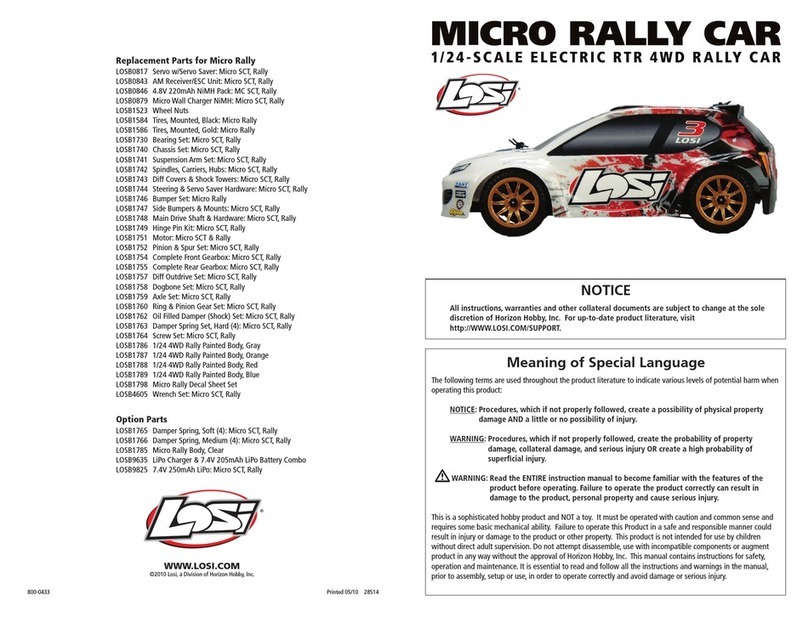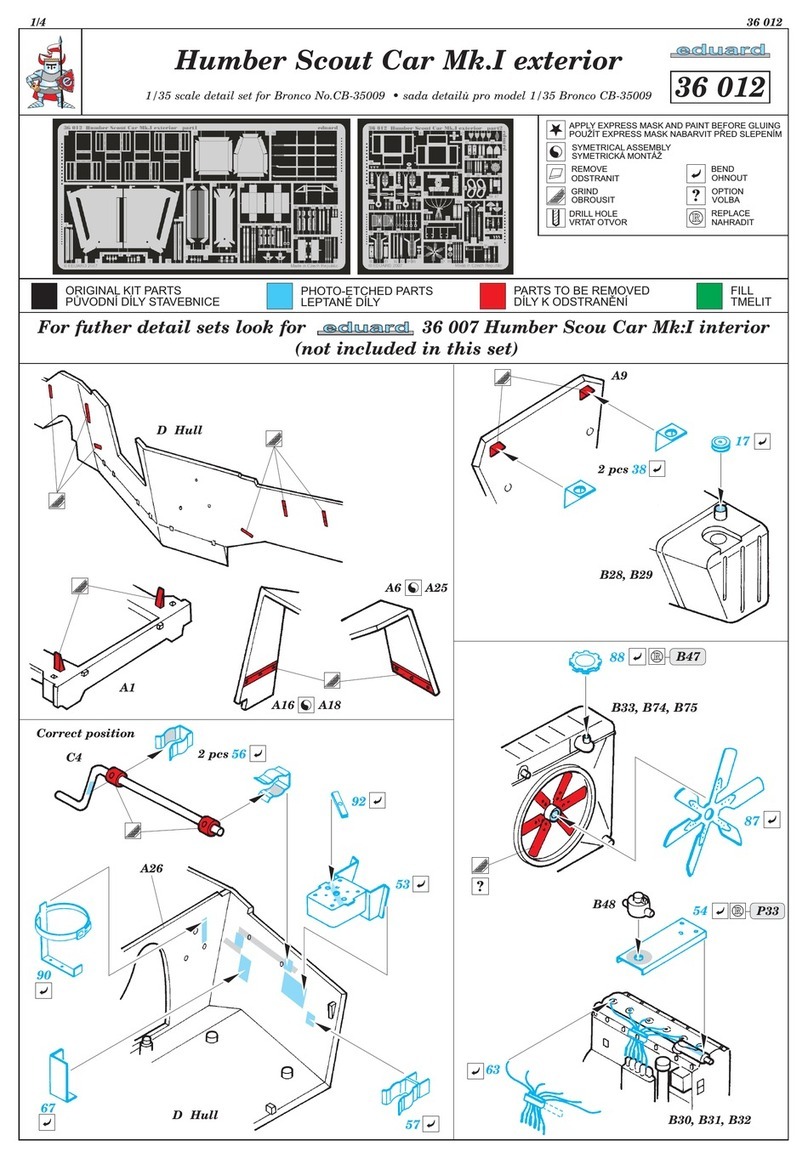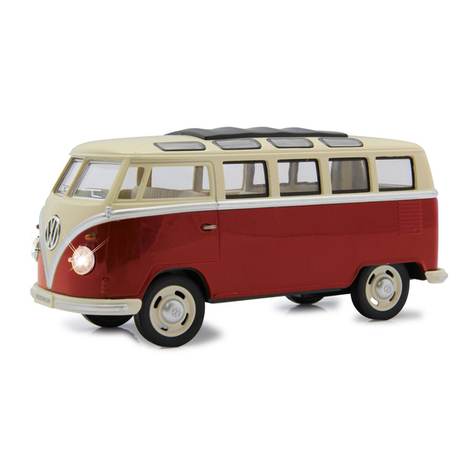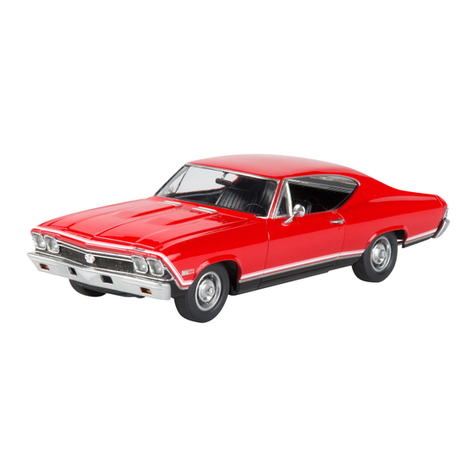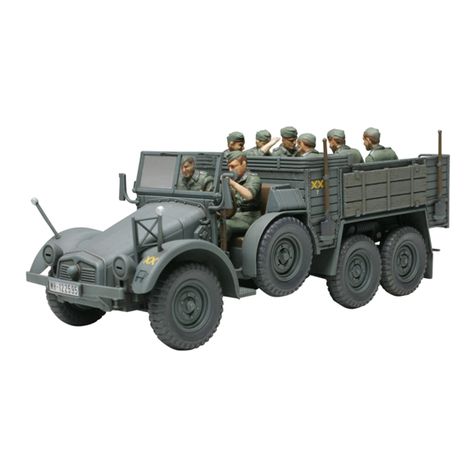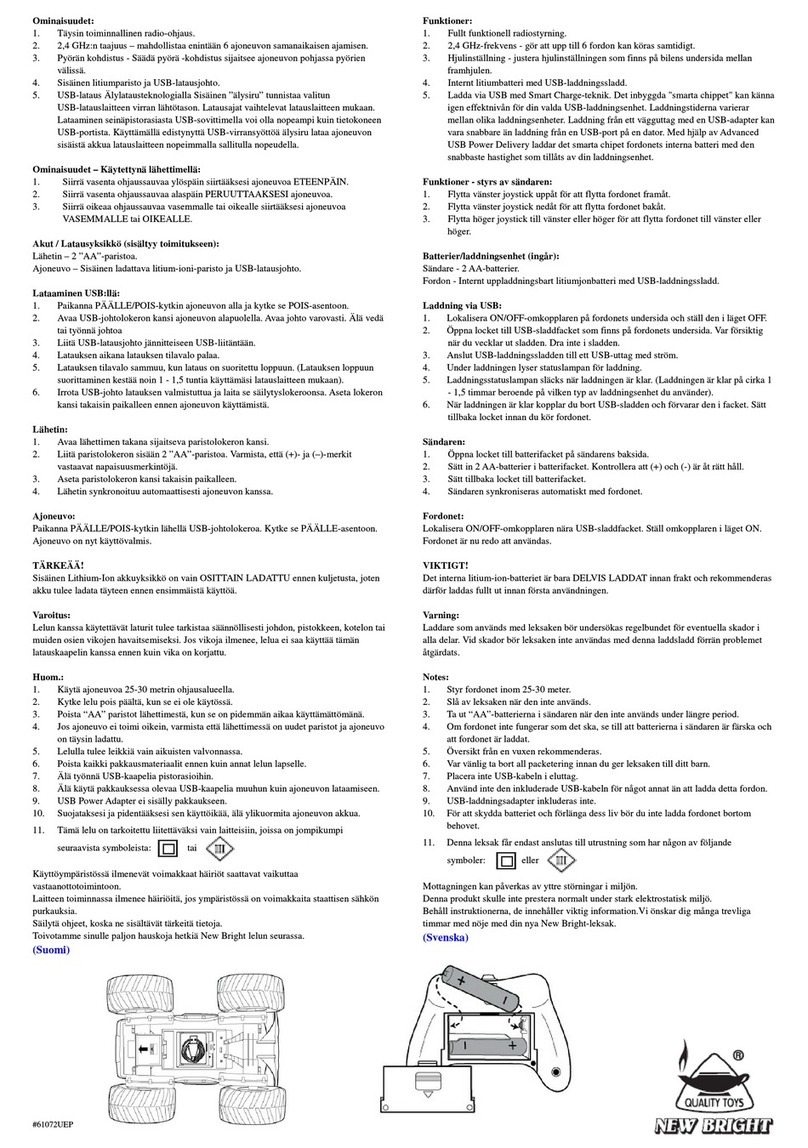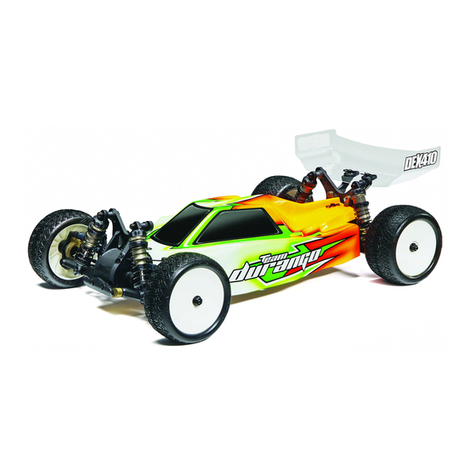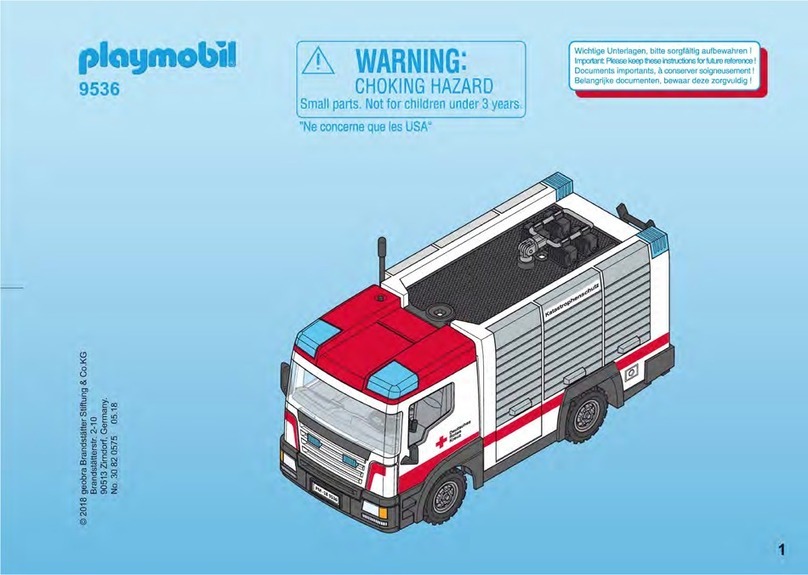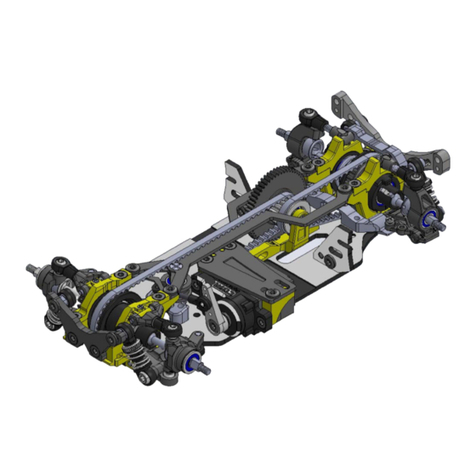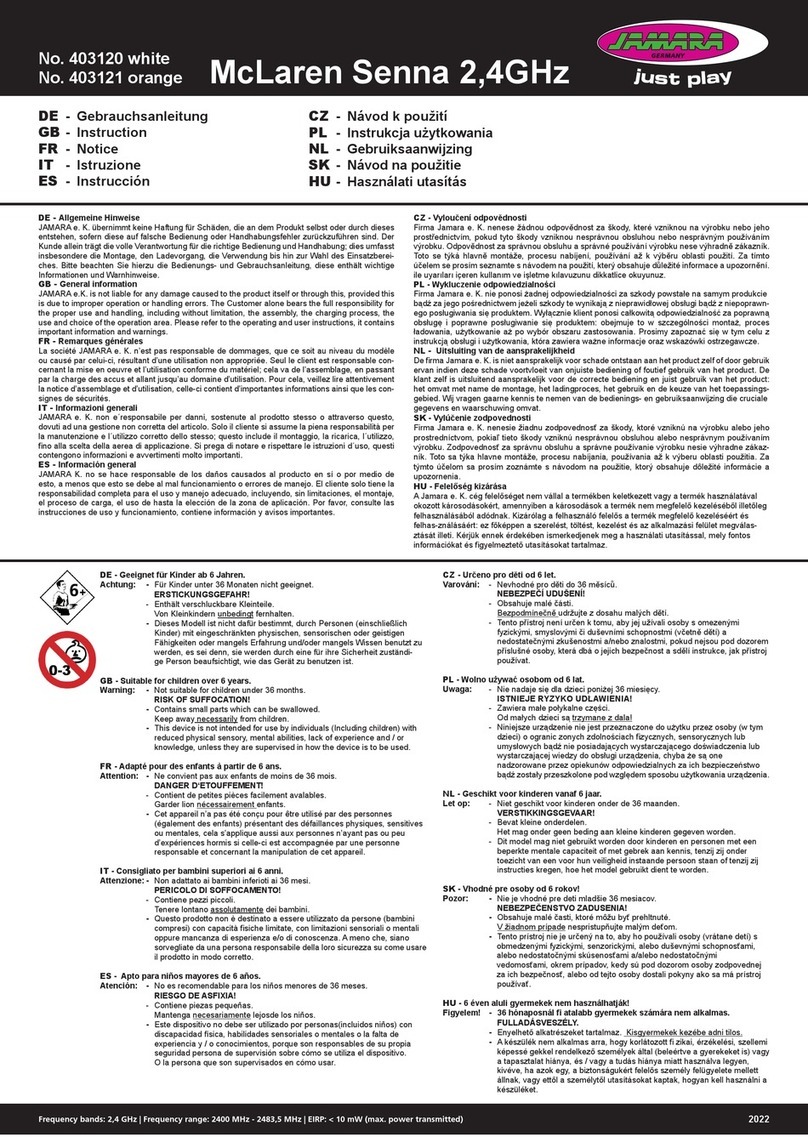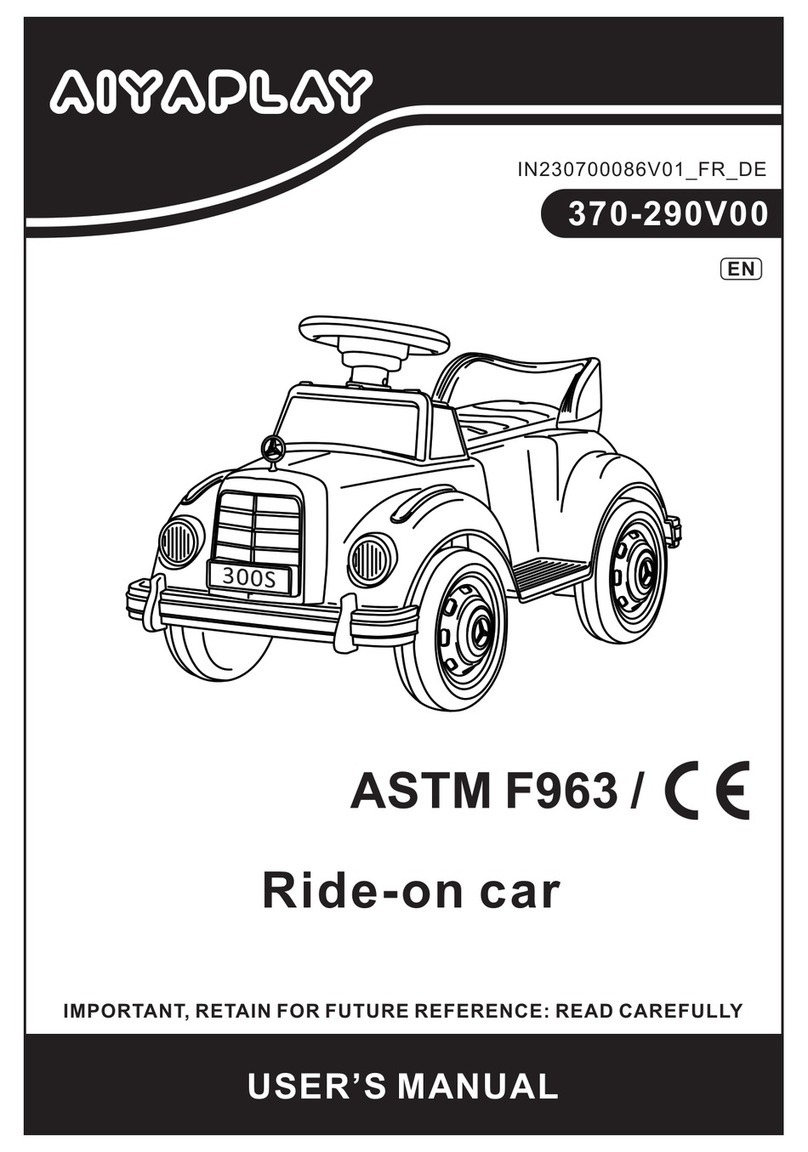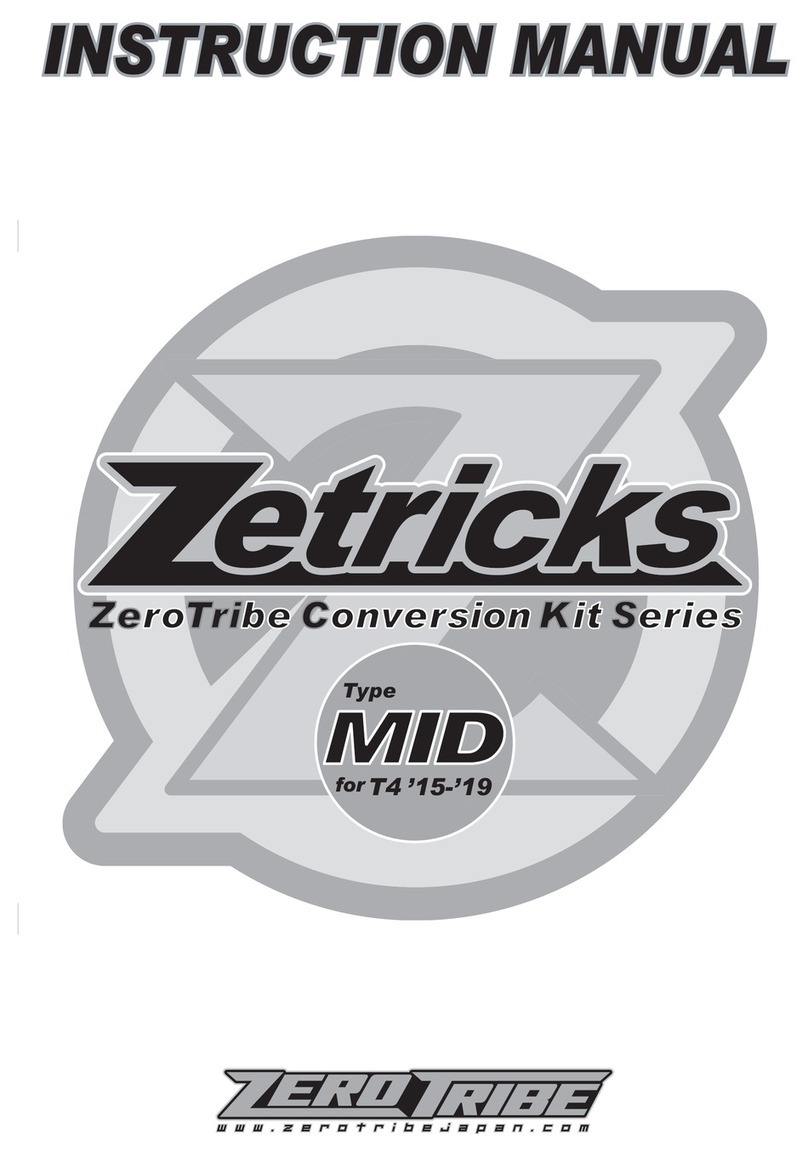
7
These are just a few things you may go through during the break in period.
Just keep it running, apply the throttle on and o as smoothly as you can.
Sudden bursts or quick releases of the throttle can stall your engine. Soon
after break in your patience will pay o with a well running engine. The
performance level of the engine will be limited by the “rich’ fuel mixture which
you will use all during the break-in process. Once the engine is fully broken-in
the mixture can be “leaned out,” and speed and acceleration will increase.
Because of the rich fuel mixture and the wearing of the new parts, deposits will
form on the glow plug causing it to fail. Expect to replace the glow plug during
the break in period, and denitely when the engine is fully broken in and the
fuel mixture is leaned out.
Setting Engine for Normal
Tuning High Speed
As you approach the rst 6-8 tanks running you can start to GRADUALLY
adjust you engine for normal performance. PLEASE NOTE any adjustments
need to be very small at 1/8th turn increments. You can then begin adjusting
the fuel mixture to maximize performance for your driving needs. To lean turn
the main fuel control needle in a clockwise direction. This will allow the car
to pull away faster and more cleanly, without hesitation and increase the top
speed. There should however still be a noticeable smoke trail.
If the main needle is screwed in too far thus allowing the engine to run too
lean, it will seem to run strong at rst, but will bog, hesitate, or stall when
running at high speed. The engine will also rapidly overheat when the setting
is too lean. This is because fuel includes lubrication, and that lubrication is
inadequate when the setting is too lean. CHECK THE ENGINE TEMPERATURE
OFTEN AS YOU LEAN THE MIXTURE. DO NOT LET THE ENGINE OVERHEAT.
You should always see smoke coming from
the exhaust.
At the optimum setting, the engine will clean
out; have a strong-sounding, high-pitched
whine at full speed; and there will be a
thin trail of whitish smoke coming from the
exhaust. It is always better to set the engine
a little rich rather than too lean.
If the engine stalls on acceleration, begins
to bog or slow down at full throttle, or if
there is a reduction in exhaust smoke, then
the engine is running too lean. Immediately
turn the high speed mixture screw
counterclockwise 1/4 of a turn and operate
the car at medium speeds for 1 to 2 minutes
to allow the engine to cool.
Tuning Low Speed
The low-speed mixture aects how the
engine will perform in the low to mid
range rpms. Turning the low-speed needle
clockwise will lean the mixture. As with the
high-speed mixture, leaning the low-speed
mixture increases performance. Again, if the
mixture here is set too lean, the engine may
be starved for lubrication in the lowand mid-
rpm ranges, thus causing overheating and
excessive engine wear.
Perform the following test to determine if
the low speed mixture is set correctly. With
the engine warm and running, allow it to idle
for approximately 15 seconds. Now quickly
apply throttle and note the performance. If the engine bogs, accelerates
erratically, and a large pu of blue smokes emitted, then the low speed mixture
is too rich. Turn the low-speed screw clockwise 1/8 of a turn. If the engine
speeds up for a moment then bogs, hesitates, or stalls, then the low speed
mixture is too lean. Turn the screw counterclockwise 1/8 of a turn. Adjust the
mixture screws in 1/8 of a turn increments, wait 15 seconds, and retest after
each change. Adjust for the best acceleration without the car stalling.
Care and Maintenance
When you are nished racing for the day, drain the fuel tank. Afterwards,
energize the glow plug with your glow plug starter and try to restart the engine
in order to burn o any fuel that may remain inside the
engine. Repeat this procedure until the engine fails to re.
Try to eject residue while the engine is still warm. Finally,
inject some corrosion inhibiting oil, and rotate the
engine to distribute the oil to all the working parts.
Do not, however, inject the oil into the carburetor, for
it may cause the O-rings inside to deteriorate. When
cleaning the exterior of the engine, use WD-40. Do
not use gasoline or any solvents that might damage
the silicone fuel tubing.
Cleaning the air lter. When the air lter starts to get
dirty, do the following steps:
Step 1. Clean the foam with fuel. Do this by
pouring a little fuel in a small can and
kneading the lter in the fuel. When it
looks cleaner, then dispose of the fuel.
Step 2. Dry the lter. Squeeze out the fuel with a paper
towel until it’s dry.
Step 3. Fastrax Fast63 Filer Oil to help keep the dirt out.
Dab the treatment all around the lter, put the lter
in a plastic sandwich bag, and knead it until the
lter is saturated, but not soaked.
Troubleshooting
Glow Plug Problems
The glow plug in your engine is an inexpensive consumable
item which must be replaced periodically to maintain peak performance and
starting ease. Most often, any starting problems or erratic performance can
be traced back to the glow plug. The glow plug should also be checked if the
engine’s acceleration and top speed performance suddenly becomes at. The
only sure way to test for a faulty glow plug is simply install a new one to see if
the problem goes away. Remove the plug from the cylinder head with a 8mm
nut driver. Make sure there is no dirt or debris on top of the head which could
fall into the engine. Do not loose the copper gasket which seals the glow plug.
Touch the glow plug to the contacts of the glow plug starter. All of the coils
should glow white. Sometimes the rst few coils will not glow while the rest are
bright, most likely indicating a bad plug. If the glow is dim orange, then the glow
starter battery should be replaced or recharged.
At the high rpm that the engines operate only a top quality plug will cut the
mustard. Therefore we recommend the use of the Fastrax Platinum No.4
glowplug (FAST760-4).
Fuel Mixture
The fuel mixture is the largest variable you have to control while operating your
engine.
Fuel brand, ambient temperature, and humidity all eect how your mixture
should be set. If the engine runs great one day but runs rich or lean the next
day, it is probably the result of a change in the air quality and temperature. This
should be expected and adjusted for.
Although there are many fuels on the market, very few are designed to perform
and protect your engine at the likes of 35,000rpm that some of our engines can
attain.
Keep between 16-20%
nitromethene content for running
and rst use. The single most
popular reason for engine failure or
unreliability is poor or wrong fuel.
HIGH SPEED
ADJUSTMENT
IDLE ADJUSTMENT
LOW SPEED
ADJUSTMENT
FTXTorroIDManual.indd 7 12/07/2019 13:26
